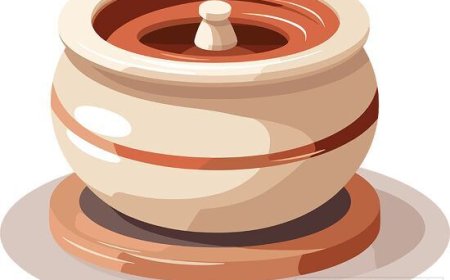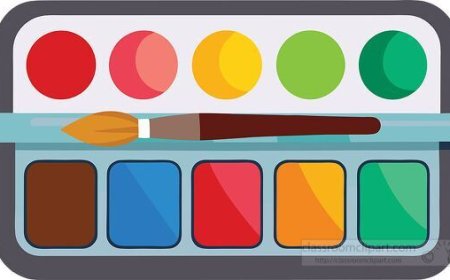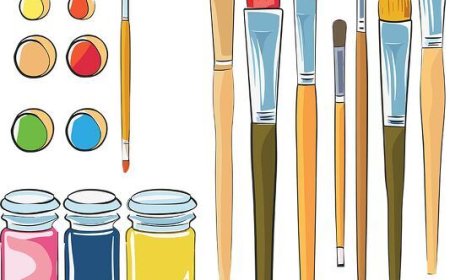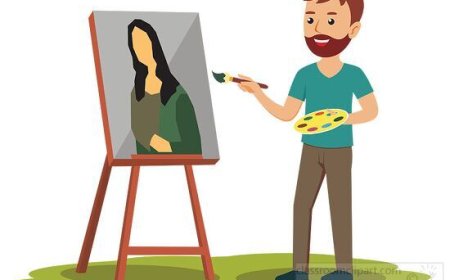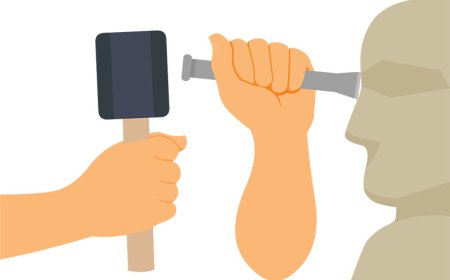Collage for Students – Discover the Art of Cutting, Layering, and Creating
Learn what collage is, explore its history, materials, and techniques, and discover how to create expressive artwork using cutouts, photos, and found objects.
✂️ Collage: Creating Art by Combining Pieces
🎨 Introduction
Collage is a fun, creative, and colorful form of art that involves assembling different pieces of paper, fabric, photos, or found objects to create something new. The word collage comes from the French word coller, which means “to glue.” In collage, artists take bits and pieces of materials and glue them together into a single artwork.
Collage allows you to mix textures, colors, shapes, and images in a way that’s totally original. You don’t need to be a great drawer or painter to make a powerful collage—you just need imagination, scissors, and glue. It’s a popular form of art in schools, museums, and even on social media, because anyone can do it.
✂️ What Is Collage?
A collage is an artwork made by sticking cut-out materials onto a surface. These materials can include:
- Magazine or newspaper clippings
- Photographs
- Wrapping paper or colored paper
- Fabric scraps or ribbon
- Buttons, string, and small found objects
- Drawings or hand-painted elements
The materials are glued to a background, such as cardboard, canvas, or paper, to create a finished design. Some collages are flat and neat, while others are rough, layered, and full of texture.
Collage encourages artists to reuse materials, experiment freely, and express big ideas with simple tools.
🧾 A Brief History of Collage
Collage has been used in different cultures for hundreds of years, but it became a modern art form in the early 20th century. Artists began using collage to challenge traditional art and show that everyday materials could also be meaningful.
- In the early 1900s, Pablo Picasso and Georges Braque started adding newspaper clippings and scraps to their paintings, inventing the first modern collages as part of the Cubist movement.
- In the 1920s and 30s, artists like Hannah Höch and John Heartfield used collage to create bold political messages, especially through photomontage—a collage made from photographs.
- In the 1960s, Pop artists like Richard Hamilton and Romare Bearden used collage to explore culture, identity, and social change.
Today, collage is still used in galleries, fashion design, album covers, and school art projects around the world.
🧰 Materials and Tools for Making Collage
One of the best things about collage is that you can use almost anything! It's a low-cost and eco-friendly art form that encourages recycling.
Basic collage supplies include:
- Scissors or craft knives (with adult supervision)
- Glue sticks, liquid glue, or Mod Podge
- Paper scraps, old magazines, or photos
- Cardboard, poster board, or sketchbook paper as the base
- Markers or paint for adding your own designs
- Found objects like fabric, foil, or string for texture
Collage is a great way to turn old, unwanted items into new, meaningful artwork.
🖼️ Types of Collage
There are many different ways to create a collage. Here are a few of the most popular styles:
- Paper Collage – Made from cut or torn paper layered on a surface.
- Photomontage – A collage created with photographs, often edited or arranged to tell a story or make a statement.
- Mixed Media Collage – Combines paper with other materials like fabric, beads, or paint.
- Digital Collage – Made using computer software by layering digital images.
- Assemblage – A 3D collage using objects, often glued onto a box or surface to create a sculpture.
Each type of collage allows for unique expression, whether you're telling a story, exploring identity, or just creating something fun.
🧑🎨 Famous Collage Artists
Many well-known artists have used collage to explore new ideas and challenge traditional art. Here are a few worth knowing:
- Pablo Picasso – One of the first modern artists to use collage with Cubist paintings.
- Georges Braque – Invented the papier collé (paper collage) technique alongside Picasso.
- Hannah Höch – A German artist known for bold political photo collages.
- Romare Bearden – An African-American artist who used collage to celebrate Black culture and jazz.
- Henri Matisse – In his later years, he made “cut-outs” using colored paper and scissors.
- Kurt Schwitters – Created abstract collages using trash and discarded materials.
These artists showed that collage is a powerful form of artistic storytelling.
🧠 Collage in Art Education
Collage is an important part of the Visual Arts curriculum because it helps students learn:
- Composition – How to arrange shapes, colors, and space
- Storytelling – Using images and symbols to express ideas
- Recycling and creativity – Making art from found or reused materials
- Fine motor skills – Cutting, gluing, layering, and designing
According to the National Core Arts Standards, students use collage to:
- Create personal or cultural artwork
- Present projects in school displays
- Respond to themes like identity or community
- Connect to history, media, and other subjects
Collage builds confidence and creativity without needing expensive tools.
🎨 Fun Collage Project for Students
📚 "All About Me" Collage
Materials:
- Old magazines and newspapers
- Photos or printed pictures (with permission)
- Glue stick and scissors
- A large piece of paper or cardboard
Instructions:
- Cut out images, words, or symbols that represent your hobbies, family, goals, and favorite things.
- Arrange them on your background paper.
- Add hand-drawn details, quotes, or patterns.
- Glue everything down, and let it dry flat.
- Present your collage to a classmate or family member and explain what each part means.
This activity helps students express their identity through art.
🧠 Vocabulary Words
| Word | Definition |
|---|---|
| Collage | Art made by sticking pieces of different materials together |
| Photomontage | A collage made from photographs |
| Mixed media | Artwork that uses more than one type of material |
| Composition | The way elements are arranged in an artwork |
| Assemblage | A 3D version of collage using found objects |
| Cut-out | Shapes or pictures that are cut and used in a collage |
| Layering | Placing pieces on top of each other in collage for texture and depth |
🎯 Interactive Quiz
1. What is a collage?
A) A painting made from oil
B) A photo taken from space
C) Art made by gluing different materials together ✅
D) A sculpture carved from stone
2. What does “photomontage” mean?
A) A picture drawn in pencil
B) A painting of a mountain
C) A collage made from photographs ✅
D) A comic strip
3. What tool is most often used in collage?
A) Hammer
B) Microscope
C) Glue ✅
D) Oven
4. Which artist was known for colorful paper cut-out collages?
A) Henri Matisse ✅
B) Leonardo da Vinci
C) Claude Monet
D) Frida Kahlo
5. What is the purpose of layering in collage?
A) To make soup
B) To cover mistakes
C) To create depth and texture ✅
D) To make it waterproof
🌟 Interesting Facts About Collage
- The word collage was first used by artists in the early 20th century.
- You can make a collage using only recycled materials—no new art supplies needed.
- Some collage artists use digital apps instead of scissors and glue.
- Henri Matisse called his paper cut-outs “painting with scissors.”
- Collage is often used in yearbooks, posters, and advertising design.
📘 Key Takeaways
- Collage is the art of creating pictures by combining cut-out materials like paper and photographs.
- It’s a flexible, expressive, and fun art form that anyone can do.
- Famous artists have used collage to tell stories, explore identity, and challenge tradition.
- Collage helps students practice composition, creativity, and recycling.
- You can make a collage from almost anything—you just need imagination and glue!


















































